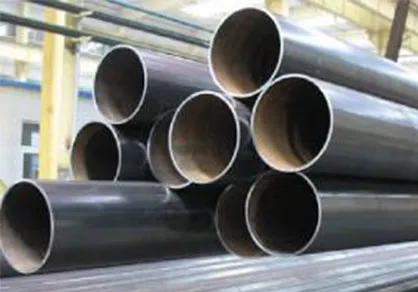-
Cangzhou Yulong Steel Co., Ltd.
-
Phone:
+86 13303177267 -
Email:
admin@ylsteelfittings.com
- English
- Arabic
- Italian
- Spanish
- Portuguese
- German
- kazakh
- Persian
- Greek
- French
- Russian
- Polish
- Thai
- Indonesian
- Vietnamese
- Zulu
- Korean
- Uzbek
- Hindi
- Serbian
- Malay
- Ukrainian
- Gujarati
- Haitian Creole
- hausa
- hawaiian
- Hebrew
- Miao
- Hungarian
- Icelandic
- igbo
- irish
- Japanese
- Javanese
- Kannada
- Khmer
- Rwandese
- Afrikaans
- Albanian
- Amharic
- Armenian
- Azerbaijani
- Basque
- Belarusian
- Bengali
- Bosnian
- Bulgarian
- Catalan
- Cebuano
- China
- China (Taiwan)
- Corsican
- Croatian
- Czech
- Danish
- Esperanto
- Estonian
- Finnish
- Frisian
- Galician
- Georgian
- Kurdish
- Kyrgyz
- Lao
- Latin
- Latvian
- Lithuanian
- Luxembourgish
- Macedonian
- Malgashi
- Malayalam
- Maltese
- Maori
- Marathi
- Mongolian
- Myanmar
- Nepali
- Norwegian
- Norwegian
- Occitan
- Pashto
- Dutch
- Punjabi
- Romanian
- Samoan
- Scottish Gaelic
- Sesotho
- Shona
- Sindhi
- Sinhala
- Slovak
- Slovenian
- Somali
- Sundanese
- Swahili
- Swedish
- Tagalog
- Tajik
- Tamil
- Tatar
- Telugu
- Turkish
- Turkmen
- Urdu
- Uighur
- Welsh
- Bantu
- Yiddish
- Yoruba

Nov . 23, 2024 05:31 Back to list
steel welded pipe
Understanding Steel Welded Pipes An Overview
Steel welded pipes are an essential component in various industries, playing a critical role in the transportation of fluids and gases. Their robust construction, flexibility in design, and economic viability make them a preferred choice in numerous applications, from construction and manufacturing to oil and gas transmission.
Composition and Manufacturing Process
Welded pipes are primarily manufactured from steel, a versatile material known for its strength, durability, and resistance to corrosion. The manufacturing process typically involves taking flat steel sheets, which are then rolled into a cylindrical shape. The edges of the rolled sheet are heated or melted and then fused together using welding techniques. This creates a seamless pipe that is strong and capable of withstanding high pressures.
Several welding methods can be used in the production of steel welded pipes, including Electric Resistance Welding (ERW), Submerged Arc Welding (SAW), and Gas Metal Arc Welding (GMAW). Each method offers unique advantages depending on the specific application requirements. For instance, ERW pipes are common in the oil and gas industry due to their high strength and ability to accommodate high-pressure conditions.
Advantages of Steel Welded Pipes
One of the significant advantages of steel welded pipes is their strength-to-weight ratio
. These pipes can handle substantial loads while remaining relatively lightweight, making them easy to transport and install. Moreover, the welding process provides an evenly distributed strength throughout the pipe, enhancing its overall performance.Another advantage is the adaptability to various sizes and thicknesses. Steel welded pipes can be produced in a range of diameters, from small residential plumbing pipes to large industrial pipes that are essential for infrastructure projects. This versatility means that they can be tailored to meet specific requirements, making them suitable for numerous applications.
Additionally, steel welded pipes are cost-effective. Compared to other materials, such as cast iron or plastic pipes, steel welded pipes offer a more economical solution without compromising quality. Their long service life, which can exceed several decades with proper maintenance, further justifies their initial investment.
steel welded pipe

Applications
Steel welded pipes are used in a myriad of applications across different sectors. In the construction industry, they serve as structural supports for buildings, bridges, and other infrastructure. In the oil and gas sector, they are crucial for transporting crude oil, natural gas, and other fuels. The water and wastewater industries also rely heavily on these pipes for efficient transport and management of water supplies.
Moreover, steel welded pipes are utilized in the manufacturing of various products. From heat exchangers to industrial machinery, the strength and reliability of welded pipes make them an integral part of modern production processes.
Challenges and Considerations
Despite their many advantages, there are challenges associated with steel welded pipes. Corrosion can be a significant issue, particularly in harsh environments or when transporting corrosive substances. To combat this, many manufacturers apply protective coatings or use stainless steel alloyed with other metals to enhance durability.
Additionally, the welding process itself requires precision. Poor welding techniques can lead to weak points in the pipe, potentially causing failures or leaks. Therefore, adherence to quality control measures is paramount in the manufacturing process.
Conclusion
Steel welded pipes are a vital commodity in contemporary engineering and industrial applications. Their strength, adaptability, and cost-effectiveness make them a preferred choice across various sectors. As industries rely increasingly on efficient and reliable transportation of materials, the importance of steel welded pipes is poised to grow. With advancements in manufacturing technology and welding techniques, the future of steel welded pipes looks bright, promising enhanced performance and sustainability for years to come. Whether for infrastructure development, energy distribution, or manufacturing processes, these pipes will continue to be a cornerstone of industrial innovation.
Latest news
-
ANSI 150P SS304 SO FLANGE
NewsFeb.14,2025
-
ASTM A333GR6 STEEL PIPE
NewsJan.20,2025
-
ANSI B16.5 WELDING NECK FLANGE
NewsJan.15,2026
-
ANSI B16.5 SLIP-ON FLANGE
NewsApr.19,2024
-
SABS 1123 FLANGE
NewsJan.15,2025
-
DIN86044 PLATE FLANGE
NewsApr.19,2024
-
DIN2527 BLIND FLANGE
NewsApr.12,2024
-
JIS B2311 Butt-Welding Fittings LR/SR 45°/90° /180°Seamless/Weld
NewsApr.23,2024











